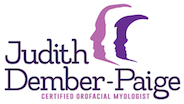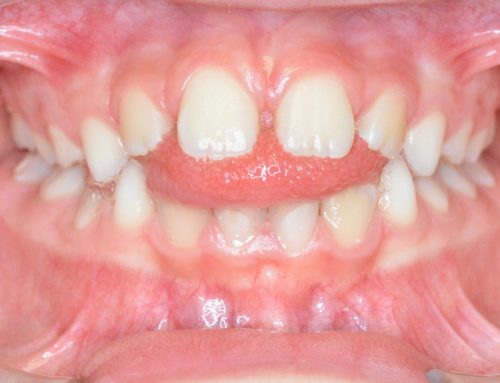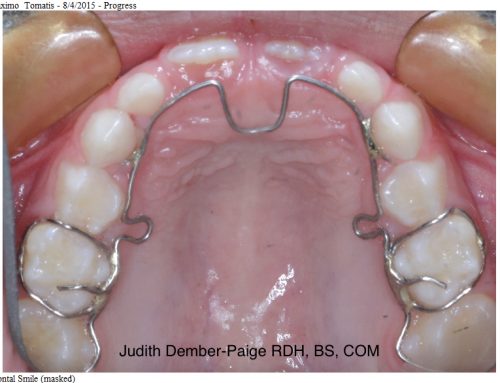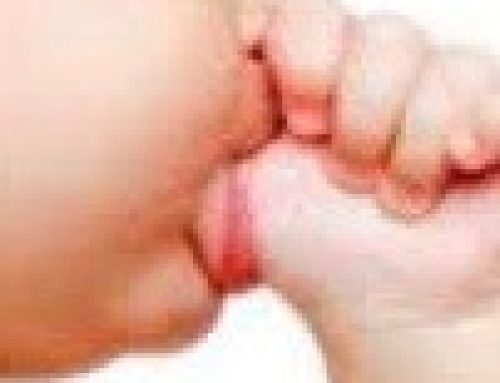By: Judith Dember-Paige, RDH BS COM
Many parents find it hard to recognize a tongue thrust in their children, primarily, because they have had it for so long. Mostly, It takes a professional with a trained eye to help parents see the tongue in dysfunction. A tongue thrusts is usually able to be seen while speaking, chewing and swallowing.
Because the tongue is low and resting on the teeth for much of the day and night, it is just enough pressure to part the teeth causing an open bite. The teeth will not be able to occlude together unless the tongue is retrained to make a new home in the palate. Orofacial Myofunctional Therapy (OMT) trains the tongue to rest in the palate, once the tongue is out of the way, the teeth may bite together naturally into an occlusion. Article (AJODO_RelapseAnteriorOpenBite[1].pdf)
When a patient comes to my office, it is usually the first time they’ve heard that they have a tongue thrust. I take the time to explain what a tongue thrust is. Parents are great co-therapists.
A tongue thrust may be accompanied by weak flaccid lips, open mouth posture, anterior open bite, possibly some speech issues, and a low forward tongue resting on the teeth. A tongue thrust is a nightmare for an orthodontist interested in helping his patient to have straight teeth. The dentist straightens out the teeth but as soon as the braces are removed if the facial muscles including the tongue is not retrained, the tongue resting on the teeth will ruin the finished result. It is important to have a plan for facial muscle dysfunction (tongue thrust) before considering braces; because after the teeth are straightened, they will want to return to their former crooked position. Orofacial Myofunctional Therapy can be done before, during or after braces.
OMT encourages both, new muscle function and muscle tone, which is a great benefits to the facial complex. The tongue should rest in the height of the hard palate. This therapy can make a world of difference in the development of a growing child; the bone changes as the child grows. Adults can also benefit from OMT by learning how to maintain a lip seal, nasal breathing, with their tongue to the roof of their mouth. The goal is better chewing, breathing and swallowing which means better health.
“Therapy in conjunction with orthodontic treatment is highly effective in maintaining closure of anterior open bites compared with orthodontic treatment alone.” Article (Am J Orthod Dentofacial Orthop 2010;137:605-14)
Orofacial Myofunctional Therapy is beneficial to anyone who is a mouth breather, has a low forward tongue resting posture, and a poor lip seal.
Children or adults with a history of mouth breathing, using artificial bottles and nipples, noxious habits, pacifiers, digit sucking, lip sucking, tongue tie / frenectomy, a failure to thrive condition, can benefit from orofacial myofunctional therapy.
#anterior tongue thrust, #bilateral tongue thrust, #anterior open bite, # low tongue rest, #orofacial myofunctional therapy, #posterior open bite, lip incompetence, #flaccid lips, #noxious habits, #crooked teeth, beautiful faces






